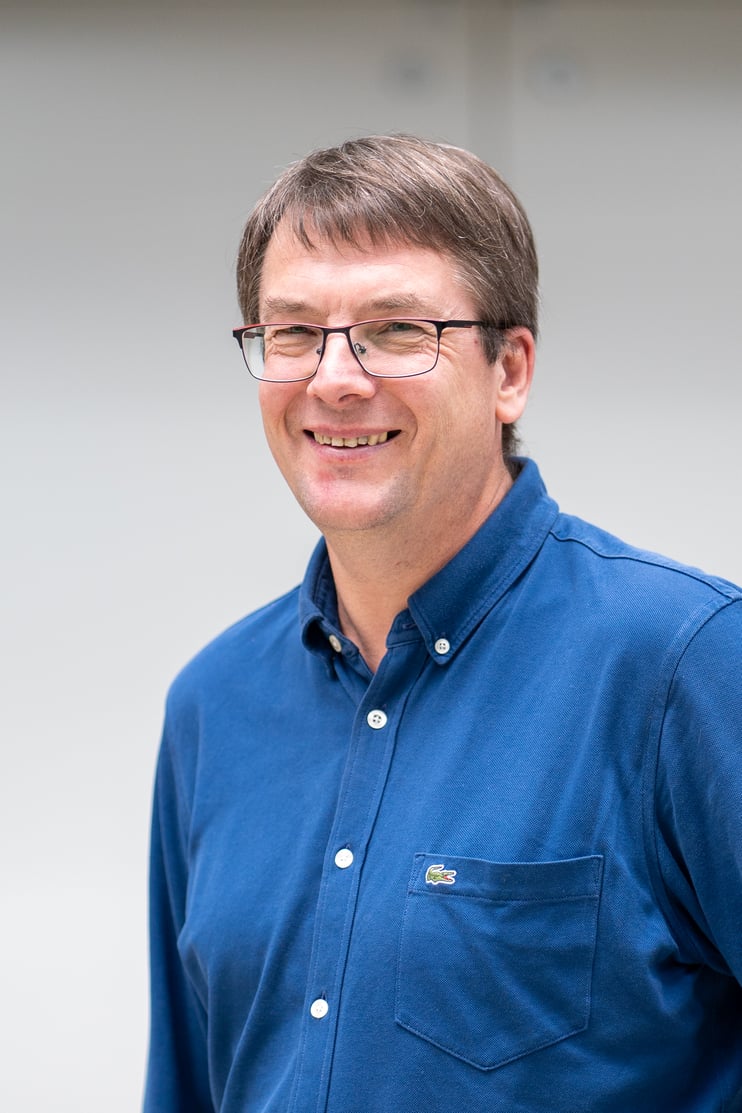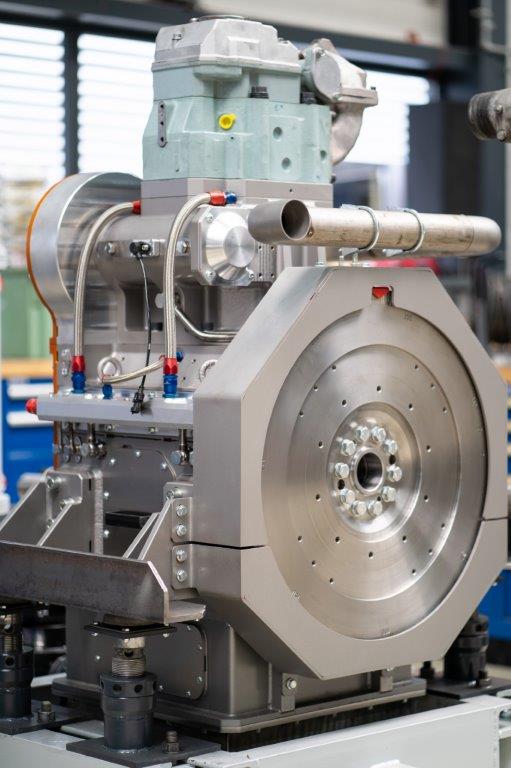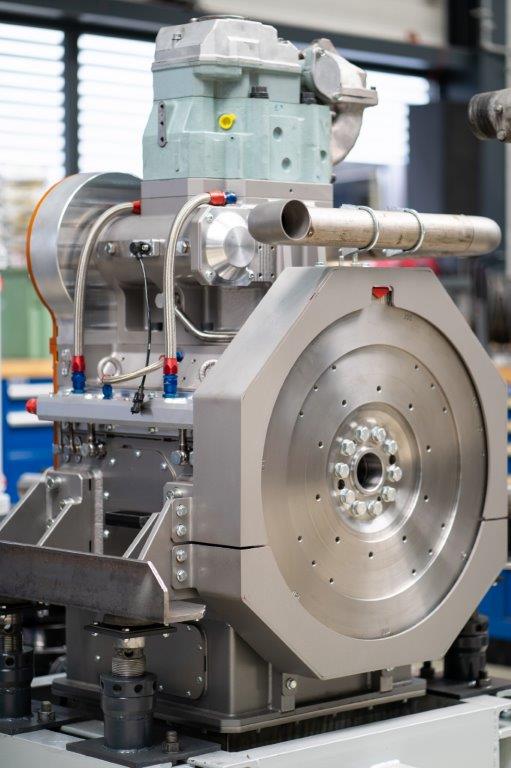Almere, the Netherlands
Jan-Wolter Post, our Project Leader for the Hydrogen ICE project, in his interview with the GTD-H consortium. Jan talks about his motivation and how it connects to Mitsubishi's mission. Let's find out the interesting story below.
''Together, we achieve much more than when working alone"
 Jan-Wolter Post (MTEE Project Leader for the Hydrogen ICE project)
Jan-Wolter Post (MTEE Project Leader for the Hydrogen ICE project)
Please introduce yourself!
My name is Jan-Wolter Post. I have been working at Mitsubishi Turbocharger and Engine Europe as an engineer for about seven years. I am the project leader for the development of a spark ignition hydrogen engine. This is quite special, because at Mitsubishi we traditionally work with diesel engines. I have always worked with alternative fuels and I am really interested in the development of hydrogen. I have been actively involved in this development all my life.
The Green Transport Delta-Hydrogen project focuses on developing a new hydrogen engine by using existing diesel engine components to the extent possible. These components are robust and have stood the test of time magnificently. You shouldn't change everything but keep what is good and only adapt some of the parts to the specific hydrogen specifications.
I am the project leader of the work package specifically focused on using of hydrogen engines for inland navigation. This is one of the seven work packages within the GTD-Hydrogen project. We are testing the concept at TNO with a single-cylinder engine research model. If you want to closely monitor the combustion process and look into ways to improve the efficiency of that process, you can best start by using a single-cylinder engine. Once we have figured out exactly how we can make the engine run as efficiently as possible, we will use that knowledge to build 6-, 12- or 16-cylinder hydrogen engines.
We intend to develop a generator set to generate electricity on a ship. On board, you always need electricity. For example, for propulsion, but also for lighting or a cargo pump. The hydrogen generator set should work with a battery or battery pack, or with one or multiple other generator sets. So a mix of fuels and power generators will be used on board. By using different sources, you can better dose and use the energy generated on board. For example, if you are sailing against the current, you need a lot of power. It makes sense to choose a different combination of generators than when going downstream. By using multiple small or specialized power sources, electricity can be generated in a more flexible and efficient way. The project is truly a team effort, with TNO also providing a lot of input.
What is the objective of the Green Transport Delta-Hydrogen pillar you are working on?
We want to make it possible for barges to transport goods from A to B using hydrogen as fuel. Within my work package, we are using an internal combustion engine for this purpose. When using an internal combustion engine, you can efficiently use existing technologies to make a huge step towards a CO2-neutral world. Stepping up the greening process. And the best part is that the entire industry already knows the combustion engine. Therefore, the threshold to start using it is low; everyone knows how the combustion engine works and the costs involved are limited. Besides, development of a hydrogen combustion engine can be done relatively quickly. We need to accelerate our greening process. This innovation can be a very important step in the right direction.
As part of this work package, we are also working with Koedood, a major dealer of Mitsubishi engines specifically for use in the maritime sector. As Mitsubishi is a major player in European inland navigation, this is a very good match. And of course, TNO is a partner as well. They are involved in the entire GTD project. All innovations come together at TNO. The interaction between the different work packages is great. It is really useful to work together and that everyone has their own focus area. Together we achieve much more than when working alone. We focus on the same issues. For example, as a consortium we are thinking about solutions for storing hydrogen and for building hydrogen infrastructure. Before I became part of this consortium, I was not thinking about such factors. I find it very inspiring to be jointly working on such topics with all partners involved. Together, we are putting the pieces of the puzzle together. It makes sense to not only focus on the engine, but to look at the broader picture. And that is where the consortium comes in.

Why is it so important to participate in this project?
I like to make a tangible contribution. We are all talking about the greening process, and this project allows us to make a major step in that direction. And that feels really good.
We should also look at European laws and regulations. Because rivers start and end somewhere, and they cross national borders. That is quite complicated. The laws and regulations in this area are not yet well established. Perhaps the Dutch government is quite willing to approve a certain marine engine so that it can be used in the Netherlands. But what happens when you have to cross a border?
And it goes both ways. These are the issues we have to deal with at a European level.
What about permits and how to safely sail with a barge that carries large amounts of hydrogen? So there are all kinds of synergies within such a consortium where you are jointly working on solutions without competing with one another.
How will these innovations affect the Dutch citizens?
You as Dutch citizens shouldn’t notice too much in the beginning, but eventually you will. When I was working around Delft some time ago, a speed limit was introduced on the highway, because the local air quality was quite poor. To improve the air quality, they decided to lower the speed limit for road transport. But was the poor air quality really due to road traffic, considering the Port of Rotterdam is just around the corner? When only addressing road transport, you don’t automatically create a cleaner living environment. You have to look at the entire picture - including the maritime sector – in terms of sustainability and greening to truly create a cleaner environment.
Indirectly, such a transition does have quite an impact on the air quality, especially in the vicinity of junctions. Historically, cities are often situated along waterways. And so it's really quite important to make sure that inland shipping is clean. Shipping is a very efficient means of transportation. If you can cover part of your total transport needs with inland shipping, this will have a positive impact on the entire Dutch, and European, infrastructure.

What parties would you like to work with to achieve success and what are the topics people can contact you for?
I get very excited about this topic and the technology involved. With regards to the transition we want to achieve with our work package, all partners perfectly complement one another at the moment. In the future, of course, other needs may arise, such as scalability. Perhaps at a later stage of the project we will have to find a party that can help us make the next step.
We are now moving from the single-cylinder research engine to a multi-cylinder engine. It makes sense to also start looking at a V12 or V16 engine. We are going to produce such variations in larger volumes soon. And maybe we need another party to do that.
Toward the end of 2023/early 2024, we want to be testing the multi-cylinder engine at TNO. Mid-2024, we will use the testing results to create a generator set and by the end of next year, we want to build that set into a barge. So our planning is ambitious.
It may be stating the obvious, but logistics is really big in the Netherlands. Everything we do has added value. GTD-H is not a small project. By focusing on the use of hydrogen, the Netherlands will truly benefit. It will have a positive impact on our position in Europe, and perhaps even worldwide. Logistics and transportation are interlinked with the economy and the industry. Rotterdam is where the big sea-going vessels come in. If we transport all those containers by road, all the roads will be clogged up. We have enough traffic jams as it is at the moment. Let's make sure that most of the goods are transported in a sustainable way via shipping routes.
About Green Transport Delta Hydrogen (GTD-H) consortium
The GTD-H consortium is a Dutch collaboration between various public and private organizations. Its goal is accelerating technological developments in the automotive, maritime, and aviation sectors to create a more sustainable society. Electrification and the use of hydrogen are central to this initiative. Mitsubishi is closely partnering with TNO in this context. The Dutch government has granted the consortium a subsidy of 47 million Euros.
More information here
About Mitsubishi Turbocharger and Engine Europe
MTEE provides internal combustion engines and generator sets for marine, industrial and integrated power plant applications. MTEE operates in the regions: Europe, Middle East and Africa. The company is part of the Mitsubishi Heavy Industries Group and is located in Almere, the Netherlands.



